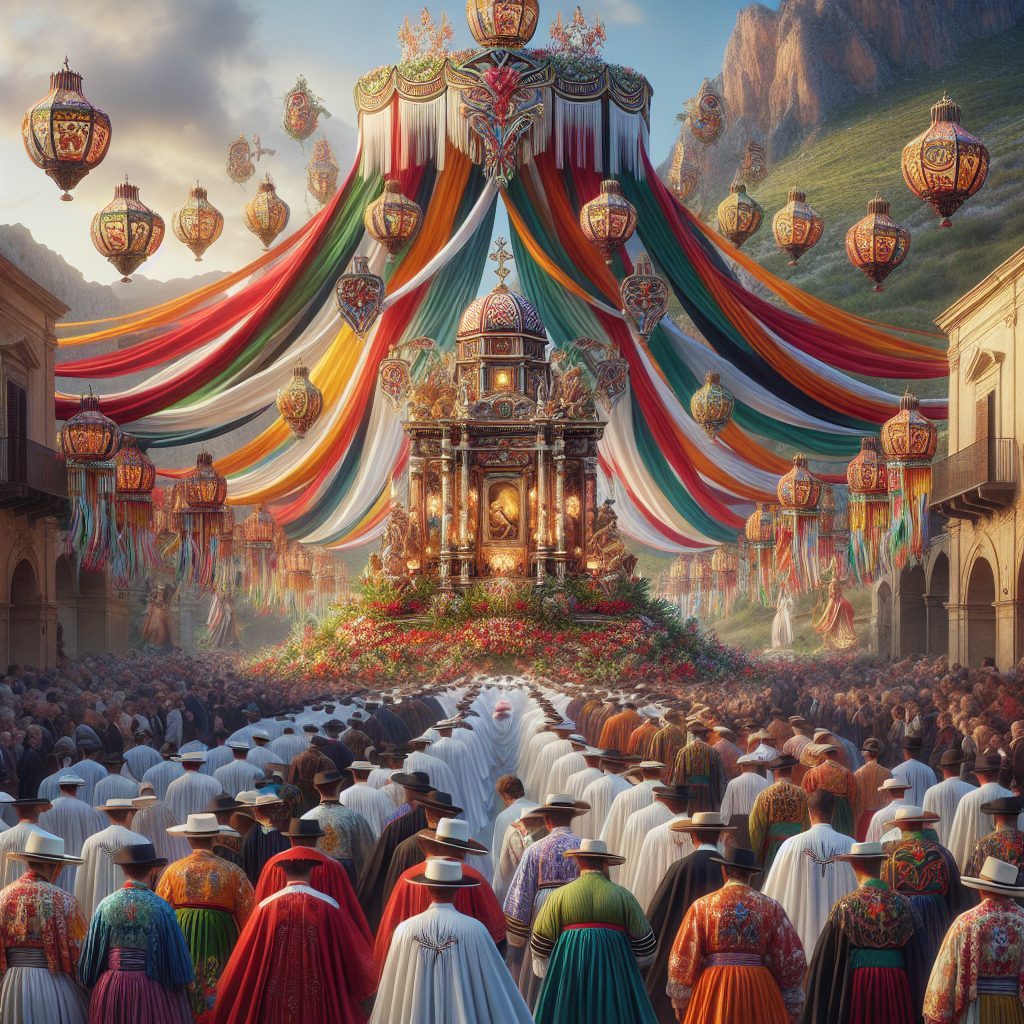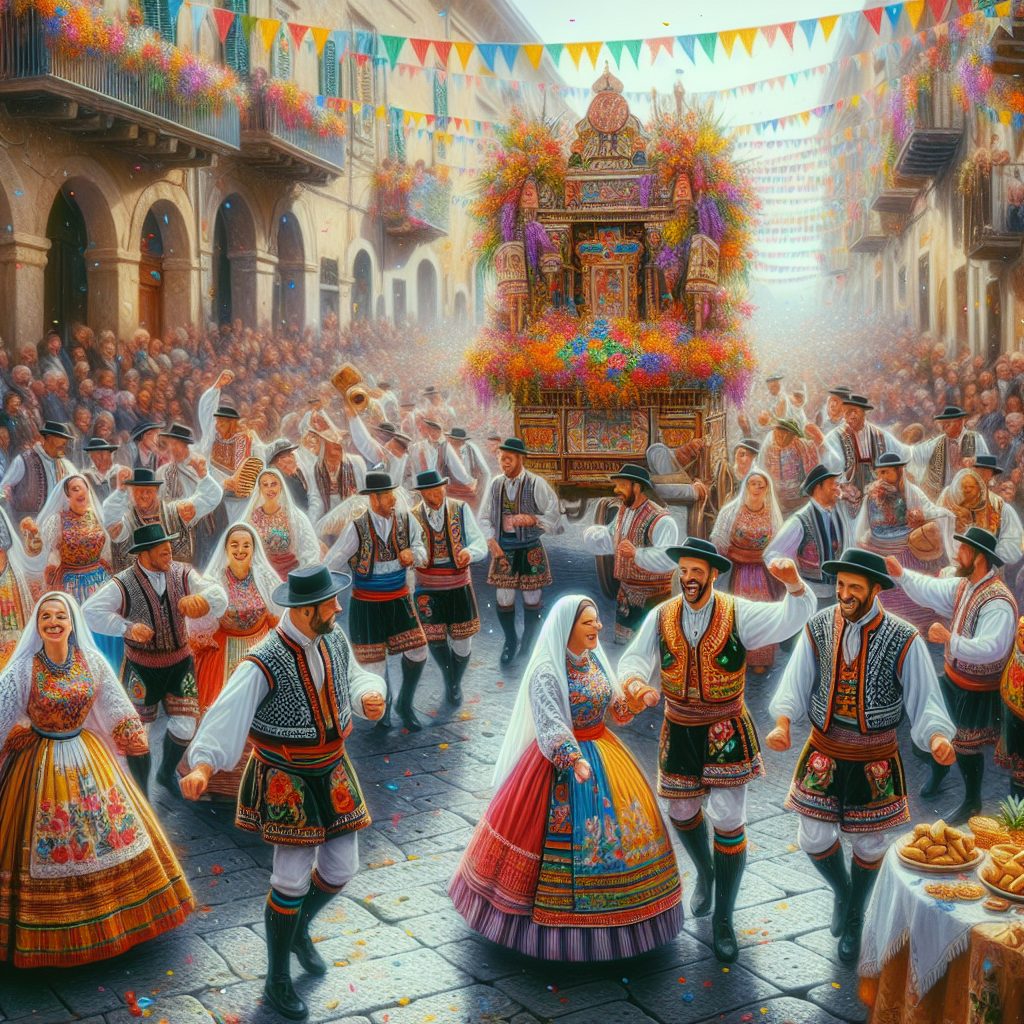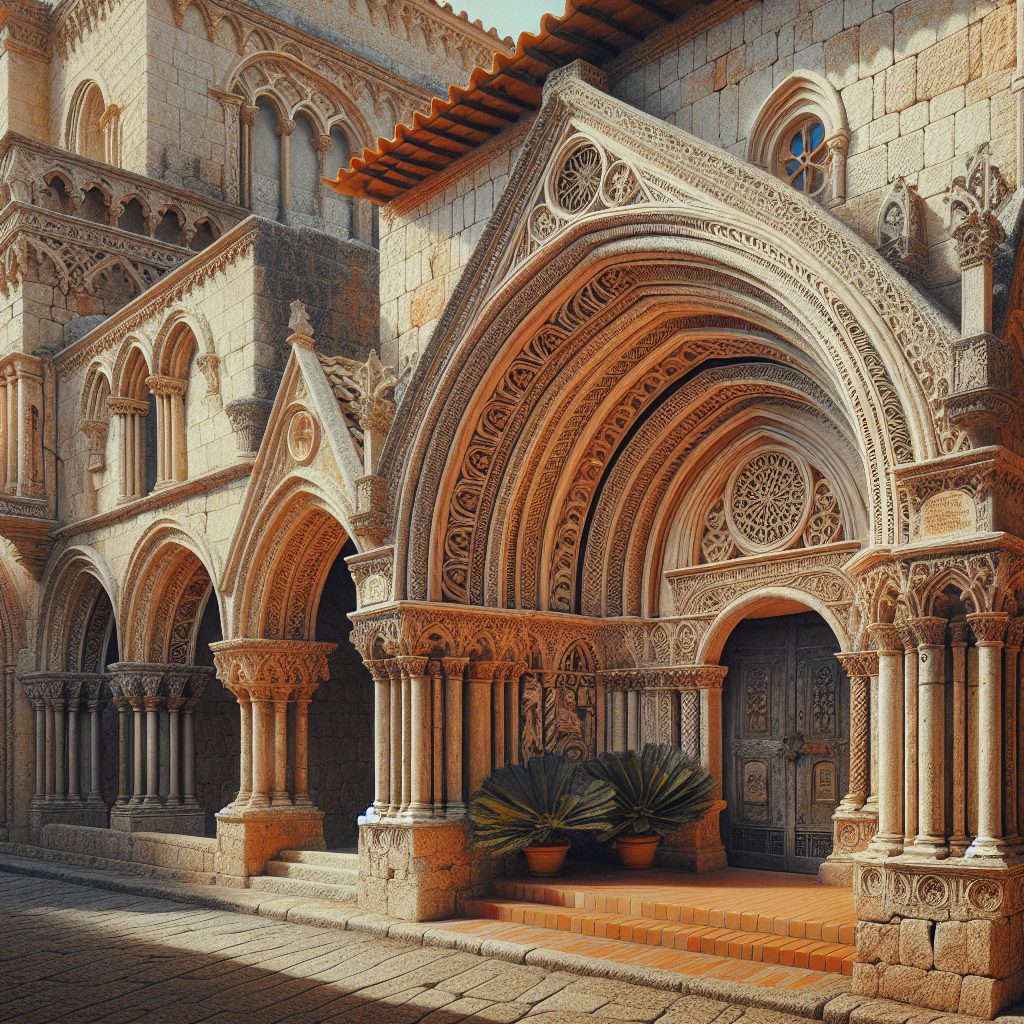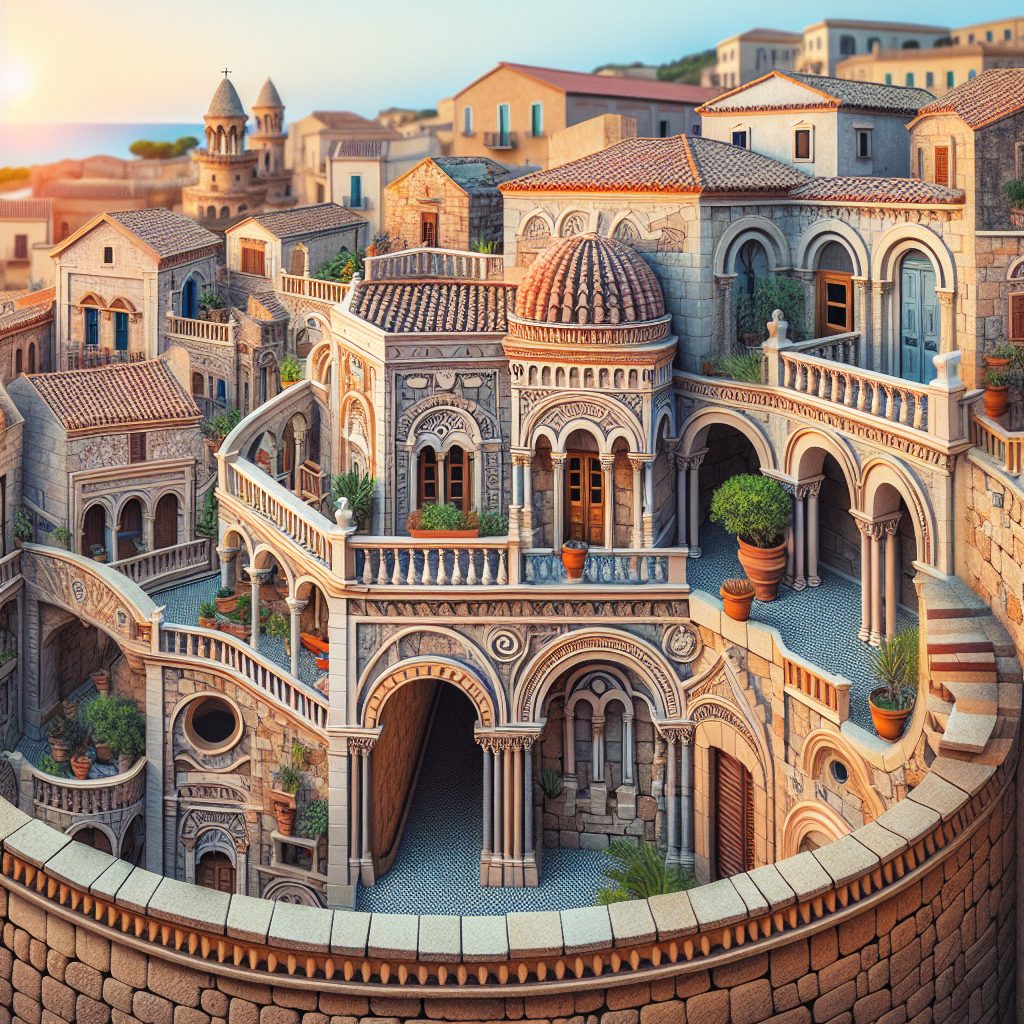Religious processions in Sardinia, one of the largest islands in the Mediterranean Sea, hold immense significance for the local community. These processions are a vibrant display of religious devotion, customs, and traditions that have been upheld for centuries. Sardinia is known for its diverse religious heritage, blending influences from both Christianity and pre-Christian beliefs. The island’s unique geographical location and rich history have shaped the distinctive nature of these processions, making them an intriguing and captivating spectacle.
With their roots deeply intertwined in Sardinian culture, religious processions showcase the island’s strong sense of community and unwavering faith. The processions typically revolve around significant events, such as the Feast of the Assumption, the Holy Week, or the commemorations of local saints. During these events, people from all walks of life come together, dressed in traditional attire and carrying religious icons and statues, as they march through the streets with utmost devotion and reverence. The rhythmic sound of traditional music fills the air, blending harmoniously with the chants and prayers of the participants.
In the upcoming sections, we will explore the key takeaways from these religious processions in Sardinia. We will delve into the historical and cultural significance, the intricate rituals and practices, as well as the impact on the local economy and tourism. Additionally, we will examine how these processions contribute to the preservation of Sardinian identity and foster a deep sense of belonging within the community. Get ready to embark on a journey through the rich tapestry of religious processions, as we uncover the fascinating aspects that make them an integral part of Sardinia’s cultural fabric.
Key Takeaways
1. Religious processions in Sardinia are a deep-rooted tradition that date back centuries and they hold significant cultural and religious importance for the inhabitants of the island.
2. The most grandiose and famous religious procession in Sardinia is the Sant’Efisio procession, which takes place annually on May 1st and attracts thousands of devotees from all over the island.
3. The procession involves the transportation of the statue of Saint Ephisus, accompanied by various religious brotherhoods and folk groups, covering a distance of 65 kilometers from Cagliari to Nora.
4. The participation in these religious processions is viewed as a solemn duty for many Sardinians, and it is believed that taking part in these events grants them protection and blessings from the saints.
5. While the religious processions in Sardinia have faced challenges and transformations over the years, they continue to be a cherished and vibrant expression of faith, community, and heritage for the people of the island.
What are the Religious Processions in Sardinia all About?
1. Origins and History
Discover the rich history behind the religious processions in Sardinia. These vibrant and deeply rooted traditions date back centuries and hold significant cultural and religious value for the locals.
2. Traditional Costumes and Symbols
Explore the fascinating traditional costumes and symbolic elements that play a crucial role in the religious processions in Sardinia. From colorful clothing to intricate masks and ornaments, each item holds special meaning and represents a specific religious narrative.
3. The Role of Music and Chants
Learn about the integral role of music and chants in Sardinia’s religious processions. These melodic and rhythmic elements contribute to the overall atmosphere and create a spiritually uplifting experience for both participants and observers.
4. Popular Religious Processions in Sardinia
Get to know some of the most popular religious processions in Sardinia and their unique characteristics. From the solemn Holy Week rituals in Cagliari to the vibrant Sant’Efisio parade in Cagliari, each procession has its own distinct traditions and attracts a large number of participants and spectators.
5. Community Participation and Devotion
Understand the strong sense of community participation and devotion that surrounds the religious processions in Sardinia. Witness how entire neighborhoods come together to prepare for and actively take part in these events, showcasing their faith and solidarity.
6. Religious Procession Etiquette
Discover the proper etiquette and behavior expected during religious processions in Sardinia. Learn about the dos and don’ts to ensure respectful and meaningful participation, whether you are a local or a visitor.
7. Preservation and Future Challenges
Explore the challenges and efforts in preserving the religious processions’ authenticity and cultural significance in Sardinia. Discover how local communities and organizations strive to pass down these traditions to future generations while adapting to modern-day realities.
Guides for Enjoying and Participating in Religious Processions in Sardinia
1. How can I respectfully observe a religious procession in Sardinia?
Learn the best practices for respectfully observing a religious procession in Sardinia, including appropriate attire, behavior, and finding ideal viewing spots.
2. Can I join a religious procession in Sardinia as a visitor?
Find out if there are any opportunities for visitors to actively participate in the religious processions in Sardinia and how to respectfully engage with the local community during these events.
3. What are some popular locations for viewing religious processions in Sardinia?
Discover the most iconic and picturesque locations to witness religious processions in Sardinia, ensuring you have the best vantage points for capturing the magnificent displays of faith and tradition.
4. Are there any specific customs or rituals I should be aware of during religious processions in Sardinia?
Learn about any unique customs, rituals, or ceremonial practices associated with religious processions in Sardinia to enhance your understanding and appreciation of these cultural events.
5. Are photographic or video recordings allowed during religious processions in Sardinia?
Find out the guidelines and etiquette regarding photography and videography during religious processions in Sardinia, ensuring you can capture memories while respecting the spiritual nature of the event.
6. What should I do if I am unable to attend a religious procession in person?
Discover alternative ways to experience and connect with religious processions in Sardinia, such as live streaming events or visiting related exhibitions and museums.
7. How can I support the preservation of religious processions in Sardinia?
Learn about ways to contribute to the preservation and sustainability of religious processions in Sardinia, such as supporting local initiatives, volunteering, or spreading awareness about these unique cultural practices.
Frequently Asked Questions
1. What is the significance of religious processions in Sardinia?
Religious processions play a vital role in Sardinian culture and tradition. They are deeply rooted in the island’s religious practices and are considered important expressions of faith. These processions allow the local communities to come together to honor saints and religious figures, reinforcing their religious identity and fostering a sense of unity.
2. When do religious processions take place in Sardinia?
Religious processions in Sardinia occur throughout the year, but they are particularly prevalent during the Holy Week leading up to Easter. Numerous towns and villages in Sardinia hold processions during this time, with each procession having its own unique schedule. It’s advisable to check the local calendar or consult with the local tourism office for specific dates and locations.
3. Are religious processions open to the public?
Yes, religious processions in Sardinia are generally open to the public. They are inclusive events that welcome both locals and tourists who wish to participate or observe. However, it is important to be respectful and follow the guidelines and customs of the procession. Do keep in mind that during some processions, certain sections or rituals may be reserved for specific participants or religious groups.
4. What can one expect to see during a religious procession in Sardinia?
During a religious procession in Sardinia, you can witness a procession of religious statues or effigies, accompanied by local clergy, members of the confraternities, and the faithful. Along the procession route, you may also encounter traditional Sardinian costumes, bands playing sacred music, and the incorporation of age-old rituals. These processions usually showcase rich cultural heritage and evoke a solemn and spiritual ambiance.
5. Can tourists participate in religious processions?
Yes, tourists are generally welcome to participate in religious processions in Sardinia. However, it’s essential to approach the event with respect for the religious significance it holds. Familiarize yourself with the local customs, dress modestly, and maintain a reverent attitude. If you are unsure about any specific rules or regulations, it’s always best to ask for guidance from a local or a representative of the procession.
6. Are there any specific customs or traditions associated with religious processions in Sardinia?
Yes, religious processions in Sardinia are often accompanied by unique customs and traditions. For example, the “S’Estru” tradition involves the race of the barefooted devotees carrying a statue of a saint during the procession. The “Su Passu” custom allows women to take off their shoes before passing over a colorful carpet created by flower petals. These customs and traditions vary from region to region, adding distinct charm to the religious processions.
7. How long do religious processions in Sardinia typically last?
The duration of religious processions in Sardinia can vary depending on the specific procession and its traditions. Some processions may last for a couple of hours, while others can span throughout the day. The more elaborate processions during Holy Week can extend well into the night. It’s advisable to check the schedule or ask locals for an estimation of the duration to plan accordingly.
8. Are there any specific safety measures to consider during religious processions in Sardinia?
During religious processions, it’s important to prioritize personal safety and the safety of others. Stay vigilant, especially in crowded areas, and be mindful of any instructions given by procession organizers or authorities. It’s also recommended to carry essential items like water, sunscreen, and comfortable footwear, particularly if the procession involves walking long distances.
9. How can one find information about upcoming religious processions in Sardinia?
To find information about upcoming religious processions in Sardinia, you can consult the local tourism websites, calendars, or reach out to the regional tourism offices. You can also inquire at the local parishes or churches as they are usually well-informed about the upcoming religious events. Occasionally, local newspapers or community notice boards may have details about the processions as well.
10. Are there any specific etiquette guidelines to follow during religious processions in Sardinia?
Yes, there are some general etiquette guidelines to adhere to during religious processions in Sardinia. Dress modestly and respectfully, covering shoulders and knees. Avoid loud conversations or behavior that may disrupt the solemnity of the event. It’s customary to greet and acknowledge the religious statues or effigies passing by, but touching them is usually restricted. Lastly, follow the instructions of procession organizers and maintain a reverent demeanor.
Final Thoughts on Religious Processions in Sardinia
Religious processions in Sardinia offer a fascinating glimpse into the vibrant cultural and religious heritage of the region. These processions not only have deep-rooted traditions but also serve as a strong testament to the faith and unity of the local communities. The intricate rituals, rich symbolism, and the immense pride associated with these processions make them a remarkable sight to behold.
By participating or observing religious processions in Sardinia, one can truly appreciate the devotion, history, and spirituality that permeate throughout the island. Whether you are a tourist or a local, these processions provide an opportunity to connect with the religious and cultural identity of Sardinia, leaving an enduring impression of its deep-rooted traditions and unwavering faith.






